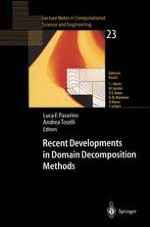2002 | Buch
Recent Developments in Domain Decomposition Methods
herausgegeben von: Luca F. Pavarino, Andrea Toselli
Verlag: Springer Berlin Heidelberg
Buchreihe : Lecture Notes in Computational Science and Engineering
Enthalten in: Professional Book Archive
